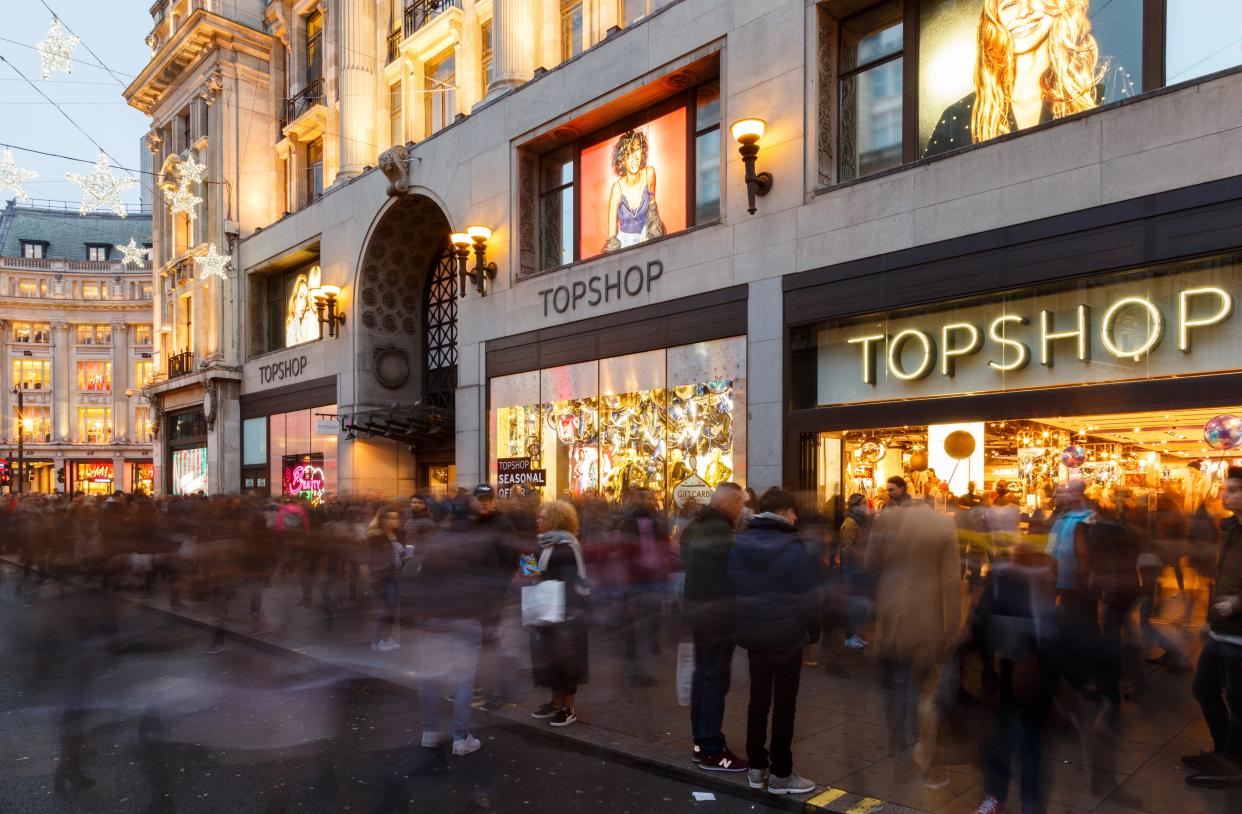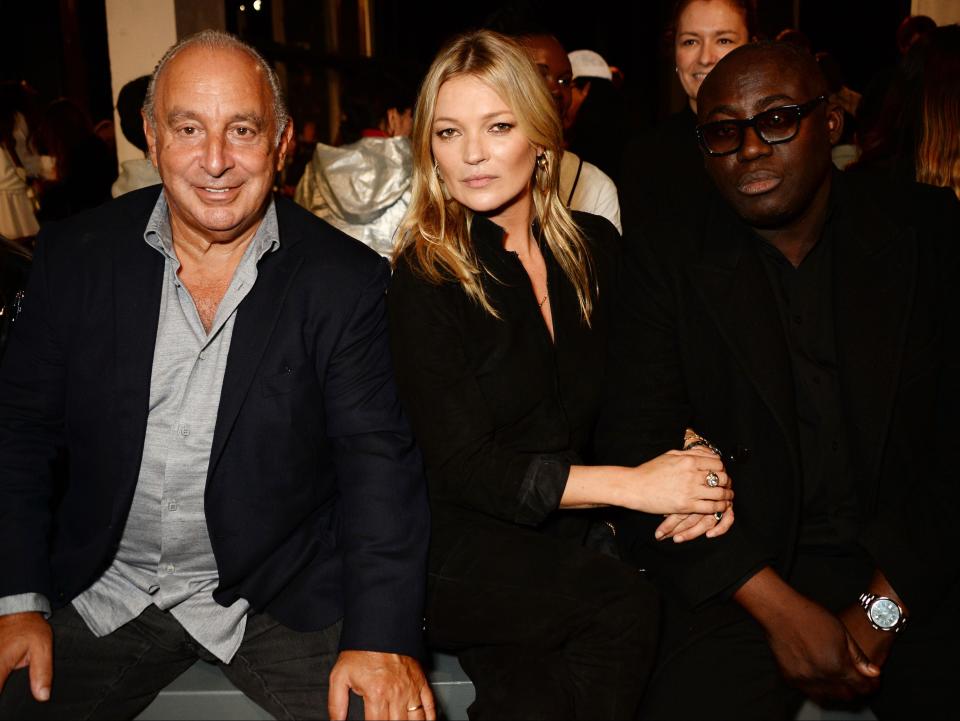Topshop: A thirtysomething’s ode to the glory days of the high street giant

The trip to Topshop was a suburban Saturday pilgrimage
(Getty)The tram to Meadowhall shopping centre ran three times an hour. If you were lucky you could skip out after morning lectures and still be back in time for the afternoon session. An hour to browse around Topshop and – if your loan had been paid – treat yourself to something bodycon or high waisted to wear to the student union (and ritually drench in Jagerbombs) that night.
My love affair with Topshop began in the early Noughties. It was a coming-of-age store that served the dual purpose of being cool enough for me and reassuring enough for my mum. It wasn’t a shop designed for women with a small section for girls, it was a teenager-targeted empire. It even felt like it was run by peers: it was the ultimate Saturday job (although largely the preserve of girls in the year above who always went on to the London College of Fashion or Central St Martins).
For those who didn't work there, the trip to Topshop was a suburban Saturday pilgrimage. A routine otherwise made up of hanging around in the park, taking 300 photos on a digital camera and getting a large Starbucks frappuccino to share between four. When our local Topshop closed for renovations for two weeks in the summer of 2009, we were bereft.
Founded in Sheffield in 1964, today Topshop has more than 500 shops in the UK, spearheaded by its Oxford Circus flagship. Across the country it was catapulted into the fashion history books with year after year of zeitgeist-defining collaborations. There was, perhaps the most celebrated, the 2007 Kate Moss debut, which saw hundreds of young women queue for hours (that red pansy dress is still sold for upwards of £100 on eBay).
When our local Topshop closed for renovations for two weeks in the summer of 2009, we were bereft
Then came Christopher Kane, again in 2007, Mary Katrantzou a year later, and even Topshop’s own slot at London Fashion Week, with everyone from Alexa Chung to Olivia Palermo sitting front row. The Topshop Jamie jeans continued to be plastered on every pair of teenage legs from Land’s End to John O’Groats. The buyers couldn’t seem to step a foot wrong and eventually the growth was recognised with CEO Philip Green being given a knighthood for his services to retail.

But the mask started to slip. Later collections like Topshop X Marques Almeida in 2014 no longer generated the same hype. In 2016, a damning report by MPs found Green and his associates had all got “rich or richer” from BHS before selling it for £1. BHS went bust in April 2016, leaving a £571m pensions deficit. Then in 2018, the brand was widely criticised after cancelling a feminist pop-up with author Scarlett Curtis, after Green reportedly saw the event and stopped it. Although they apologised (in the form of a £25k charity donation to Girl Up), the damage had been done.
Weeks later, Green was named in parliament as the businessman accused of “repeated sexual harassment, racist abuse and bullying”. Although Green denied the allegations, the tarnished reputation was contagious. Beyoncé pulled her Ivy Park collaboration from stores – although she never gave a reason. And Karren Brady resigned from the board saying she couldn’t square her “feminist credentials” with the accusations.
Separately, criticism grew online of Topshop’s non-inclusive sizing and the inaccessibility of the brand to plus-size shoppers, a long-term problem given an ever-greater spotlight as issues bubbled to the surface.
Criticism grew online of Topshop’s non-inclusive sizing and the inaccessibility of the brand to plus-size shoppers
As Topshop girls like me became women, the brand began to leave a sour taste in the mouth. Whatever values we thought it might have stood for (or perhaps we never thought beyond the space it gave us as teenage shoppers with agency), it certainly no longer represented. And for today’s young Gen-Z shoppers it is clear that online brands like Asos, Boohoo or Pretty Little Thing are able to provide cheaper, faster access to fashion trends than Topshop ever could.
Although breakneck speed of production and daily drops of new clothes are never going to be sustainable in terms of environmental impact, Topshop – which has struggled to keep up with the online innovation of its peers – cannot claim planet-friendly kudos as the reason for falling behind. Eco ratings platform goodonyou.eco rates Topshop as “still having a long way to go”.
In its most recent accounts for the year to 1 September 2018, Arcadia reported a £93.4m pre-tax loss and said sales had fallen 4.5 per cent. The group underwent a restructuring in 2019, and closed 50 shops. Even pre-pandemic it seemed Arcadia’s colours were nailed to the mast, but with the nationwide closure of shops for much of 2020, its fate seems sealed.
On 27 November it was reported that administrators could be called in within days. While it is not yet known whether Topshop will live to see another year, the era of it wearing the retail crown is certainly over. For a brand that always seemed capable of predicting our future desires before we knew them, will it be able to use its crystal ball and save itself?
Read More
Did Rishi Sunak just kill the hoodie?
Why it’s time to add a pair of playful slippers to your WFH wardrobe

 Yahoo Movies
Yahoo Movies 
